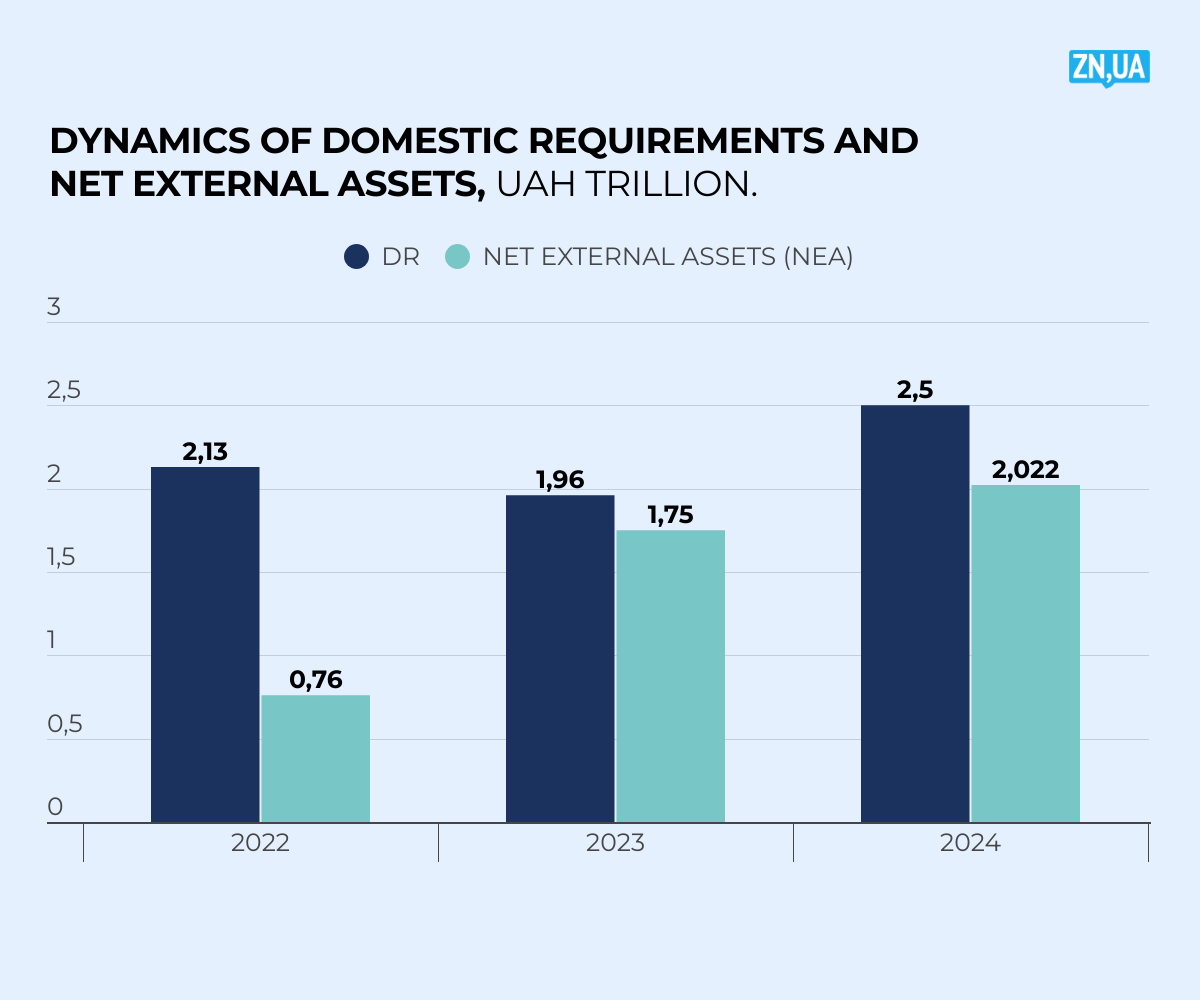What Is the Size of the Shadow Economy of Ukraine and Its Influence on Our Development
The shadow economy in Ukraine has always been quite large, even according to official estimates it reached 40%, so the statement that currently, during the war, the "shadow" is growing, seems quite natural. But can we prove this claim given the limited amount of data we currently have? Well, let's try to analyze the size of the shadow economy and its impact on the general state of the country.
Since 2014, according to the Ministry of Economy of Ukraine, we have had a revolutionary withdrawal of our economy from the grey sector: the level of the shadow economy has decreased from 43% of the gross domestic product (GDP) in 2014 to 32% in 2021, on the eve of the war (there was even a short-lived record minimum in 2019 — 28%).
As you can see, the "shadow" level increased by 4% during the pandemic. That is, the growth of the grey sector during any crisis (economic, pandemic, war) is a natural and to some extent logical process. This is how a complete economic organism reacts to external shocks in order to somehow function and survive.
The tax amnesty, which started very late in 2021, also failed to create permanent positive incentives for the "whitening of the economy" and its movement from the gray sector. For example, during the entire period of martial law in Ukraine, only UAH 3.92 billion was declared before legalization, and the amount of one-time tax was up to UAH 247 million.
What is the shadow economy and how to measure it
At the moment, the Ministry of Economy of Ukraine assesses the level of "shadow" based on the following assessment methods:
— by the method of population expenditure (retail trade);
— by the electrical method;
— according to the monetary method.
None of these methods can be absolutely accurate, so the Ministry of Economy of Ukraine calculates an aggregated indicator (unfortunately, the publication of these indicators, like many others, was suspended with the beginning of the war).
If we take the method that evaluates the dynamics of retail trade and the real spending of the population on the purchase of consumer goods, then the logic here is approximately as follows: if the official trade turnover grows faster than the real income of the population, then some of the income from the grey sector and savings are spent by individuals through the legal sector of the economy. That is, the withdrawal of our economy from the grey sector is taking place.
In 2023, the official retail trade turnover of natural persons amounted to UAH 1.8 trillion, having increased from UAH 1.4 trillion in 2021 by 30.5% in nominal terms and by 15.4% taking into account inflation. At the same time, the real growth (minus inflation) of personal income in 2023 in the official segment was 3.5%. Taking into account that the dynamics of transfers from abroad did not increase during the specified period, it can be considered purely theoretically that legalization through trade reduced the grey sector by more than 10%.
The electrical method is based on the assumption that real growth of the gross domestic product (GDP) is accompanied by an adequate increase in electricity consumption (except for household consumers). If the gross domestic product (GDP) grows faster than the consumption of electricity, then part of the growth of the gross domestic product (GDP) was provided not by a real increase in production volumes, but by the withdrawal of a certain share of the final product from the "shadow" at a constant level of energy consumption of the two compared periods.
In 2022, real gross domestic product (GDP) in hryvnia decreased by 28.8%, and in 2023 it increased by 5.3% (restorative growth on a low statistical basis of comparison). We will use the electrical method to estimate the rate of growth of the gross domestic product (GDP).
In 2021, 155 billion kWh of electricity was produced, 120 billion (or 77%) were consumed, the rest — losses, costs in networks, etc., net export was 2 billion kWh. In 2022, production fell to 115 billion kWh, consumption — to 90 billion (78%), net exports — to 1 billion. The reduction in production was 26%, and consumption — 25%. This roughly corresponds to the level of decline in gross domestic product (GDP) in 2022 (up to 29%).
However, in 2023, we are already observing a completely abnormal picture: electricity production has decreased to 105 billion kWh, consumption — to 85 billion (81%). It was not the export that was recorded, but the net import of electricity for 0.4 billion kWh. In relative terms, production decreased by 9%, and consumption by 6%. At the same time, statistics determined the growth of the gross domestic product (GDP) by 5.3%. The situation is really not typical at all, because electricity consumption decreased by 6%, and the gross domestic product (GDP) increased by 5%. What is the reason?
In our opinion, the root of the problem lies in the deep structural degradation of the Ukrainian economy. The reason may be almost complete deindustrialization and the dependence of the gross domestic product (GDP) on the raw agricultural sector, the banking and service sectors, where there is no direct relationship between the growth of production and electricity consumption. In addition, an increase in the contribution to the gross domestic product (GDP) of tax revenues. All these segments of the economy (except the agricultural sector) are directly dependent on the amount of foreign aid: taxes, finance and the service sector (including trade) are kept afloat by foreign financial aid.
Among the positive effects of such a structural transformation, only the reduction of the gap between production and consumption of electricity can be mentioned: if in 2021 consumption was 77% of production, then in 2023 it would be 81%.
That is, up to 4% of electricity production, which previously disappeared in the form of losses in networks, is now officially consumed. This can be explained by the decline of the "shadow" electricity market, which involved the production of large enterprises of domestic financial and industrial groups that stopped or were destroyed during the war.
In essence, our economy is becoming less energy-rich. No less energy-intensive (which would be a completely positive phenomenon), namely less energy-rich. But, again, purely theoretically, the electric method demonstrates the effect of transforming the shadow economy into a more transparent one by 5%.
The monetary method is based on the dynamics of the reduction of cash in circulation relative to the volume of the money supply.
If we take this ratio for June for the period 2021–2024, then we will get the following dynamics in percentages: 28 in 2021, 29 in 2022, 24 in 2023, and 23 in 2024. That is, even with the use of the specified method, we have a sign that our economy is becoming more transparent at the level of at least 5%, which coincides with the data obtained by electrical and commercial methods.
The figure shows the data of this dynamics, where the domestic requirements (DR) indicator shows the dynamics of internal lending to the economy and state bodies, the net external assets (NEA) indicator indicates the country's foreign currency assets, and the domestic credit (DC) indicator reflects the requirements to other non-financial corporations.
As we can see, if before the war, the ratio of the net external assets (NEA) to the domestic requirements (DR) in 2021 was 43%, then in the first year of the war this indicator decreased to 35% (due to the softer monetary policy of the National Bank of Ukraine (NBU) in the first half of 2022 and filling the economy with money through the war bond system. It is worth noting that at the same time, external aid was received at that time in rather small doses).
However, in 2023, this indicator increased to 89% due to the tight monetary policy of the National Bank of Ukraine (NBU). At the same time, the amount of foreign aid increased significantly, which contributed to the increase of the country's foreign exchange reserves.
A slight weakening of this indicator in 2024 (to 80%) indicates a partial softening of the monetary policy of the National Bank of Ukraine (NBU) (reduction of the discount rate from 25 to 13%). At the same time, the flow of foreign aid slowed down a bit (decrease in the level of net external assets (NEA)).
As we can see, the monetary situation "kills" both the shadow economy through demonetization and compression (inhibition of growth) of the money supply, as well as the legal segment of the economy.
In fact, the National Bank of Ukraine (NBU) simultaneously increased the indicator of net foreign exchange reserves and restrained the internal lending of the economy (although the war itself does not stimulate lending either), which slowed the economy's adaptation to war and energy shocks.
Cash outside banks
|
Year |
М0, UAH billion % |
% |
|
2021 |
541 |
|
|
2022 |
629 |
16,3 |
|
2023 |
664 |
5,6 |
|
2024 |
750 |
13,0 |
Source: NBU data.
As we can see in the table, aggregate M0, which shows the volume of cash that is outside banks, grew at a fairly moderate pace (data for June of the corresponding year): by 16.3% in 2022, by 5.6% in 2023 and by 13% in 2024. Despite the fact that this year there is a certain surge in the transition to cash, nevertheless, taking into account inflation, the growth of aggregate M0 is even negative.
Thus, it is possible to make a sensational conclusion
The war and its derivatives (energy crisis, mobilization, migration) for the first time in our history caused more damage to the shadow economy than the official one.
The "white" economy functions with the help of state employees, critical infrastructure enterprises, the defense sector and on government orders, supported by funding from external sources. They all adapt to the challenges of war better and faster.
The grey sector, on the other hand, suffers from a drop in solvent demand among the bulk of its consumers, namely the low-income population. In addition, the shadow economy suffers from under-resourced logistical problems, financial constraints and the growing appetites of regulatory bodies, without the protection of which no "shadow" would last a month.
So, despite the fact that usually during a crisis the shadow economy grows significantly, the current war is killing even it. Currently, the volume of the shadow economy of Ukraine can be estimated at the level of 25–30%.
But this, first of all, does not mean that further measures to reduce the informal sector are not needed, because it is unlikely that anyone will be really proud of the fact that a quarter of the economy of his country is shadow sectors.
Secondly, the "shadow" level is not a constant indicator. After all, it is possible to reach the usual 40% if one or two years are not successful. In addition, given that the main factor in bringing the economy out of the grey sector was the war, and not the actions of the government and control bodies, it is quite logical to expect such a drop back to the usual 40% after the end of the hostilities.
Thirdly, the "spontaneity" of our withdrawal of the economy from the grey sector should finally hint to government officials that man-made measures of struggle have clearly not been effective. So, future approaches to creating a more transparent economy, if only for the sake of fixing the current result, should be fundamentally different.
Please select it with the mouse and press Ctrl+Enter or Submit a bug













 Login with Google
Login with Google